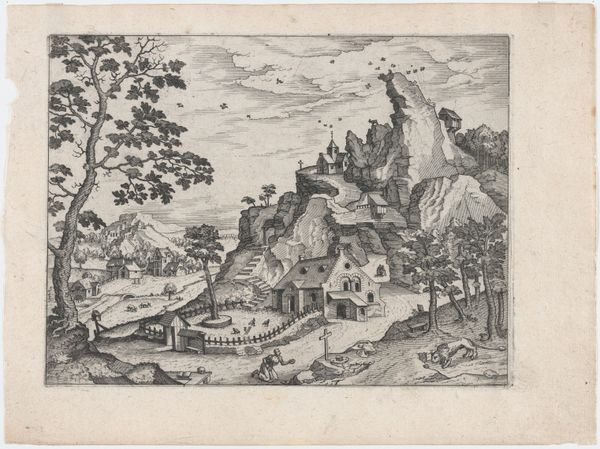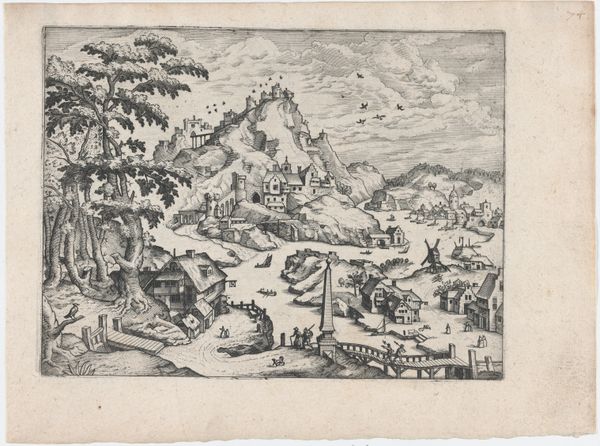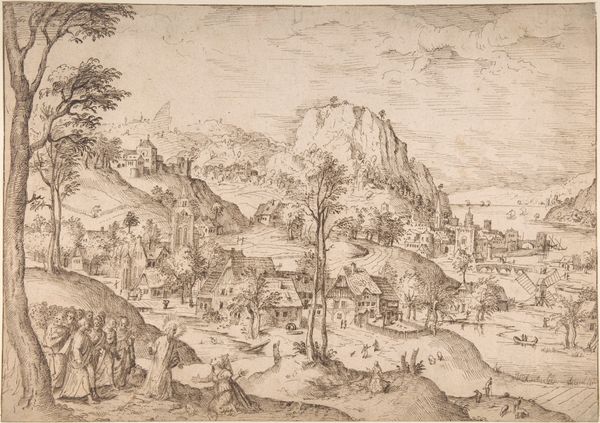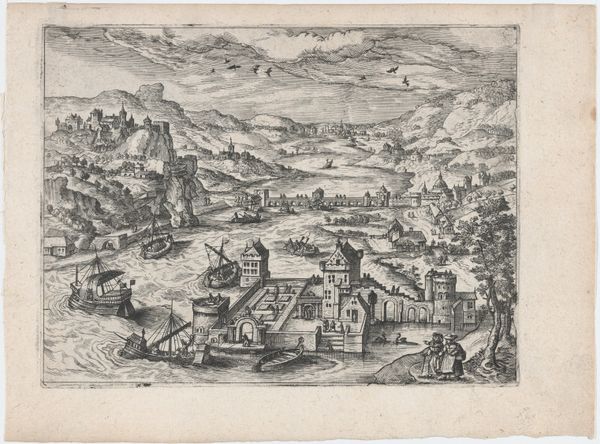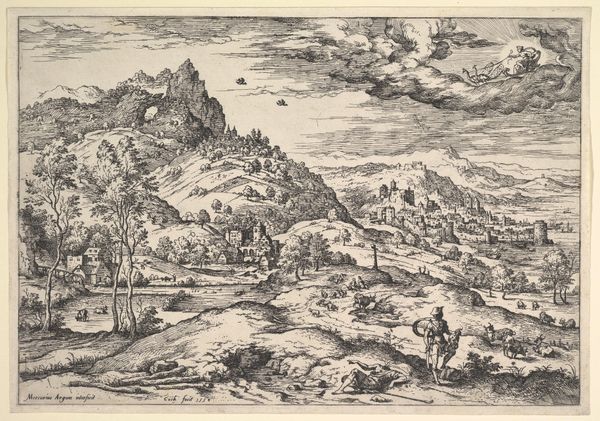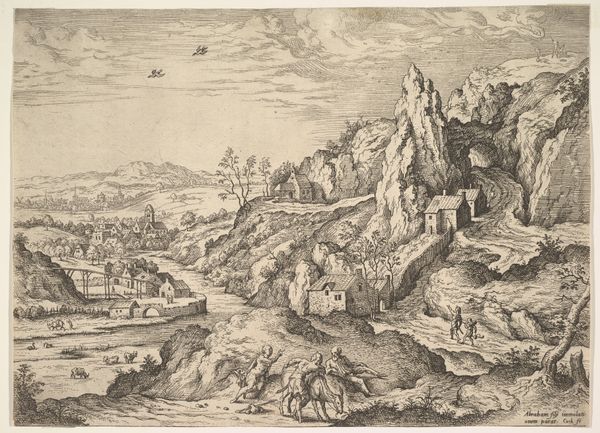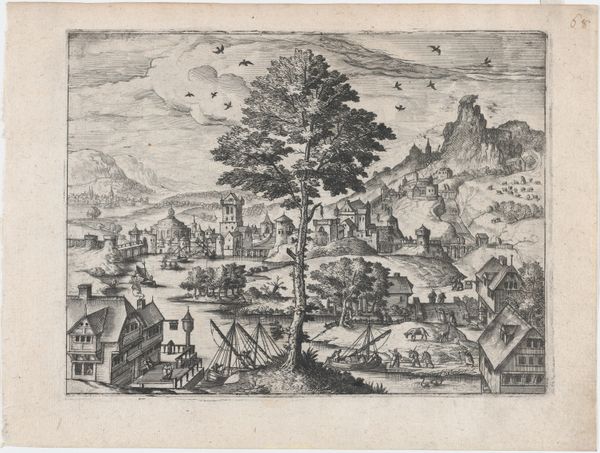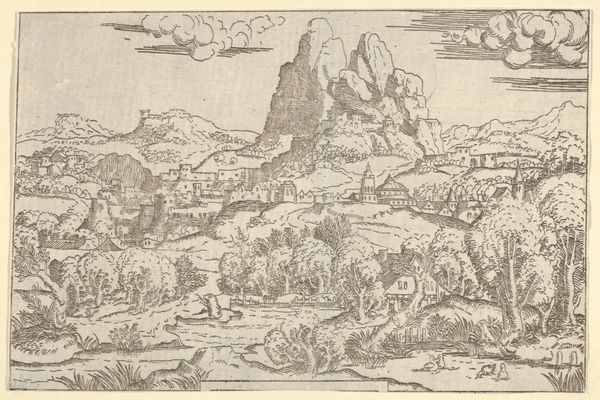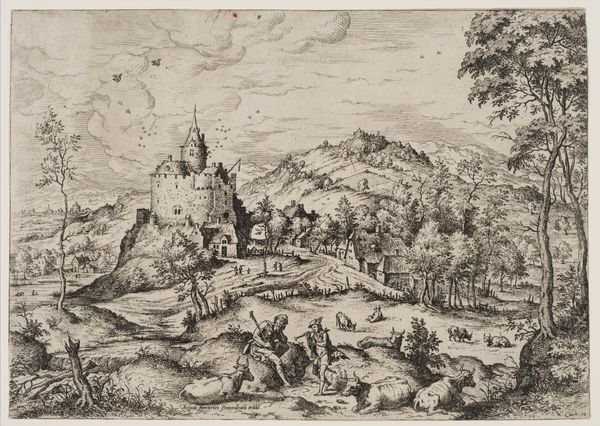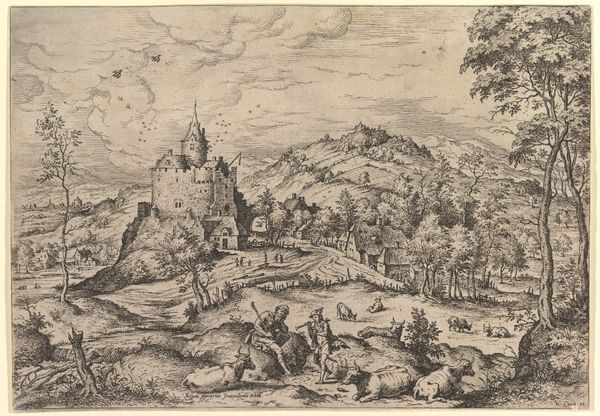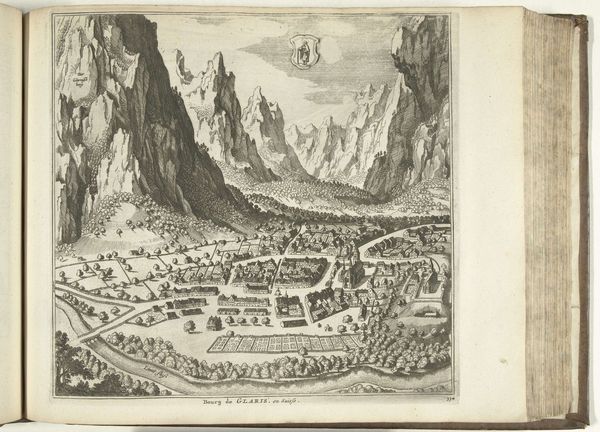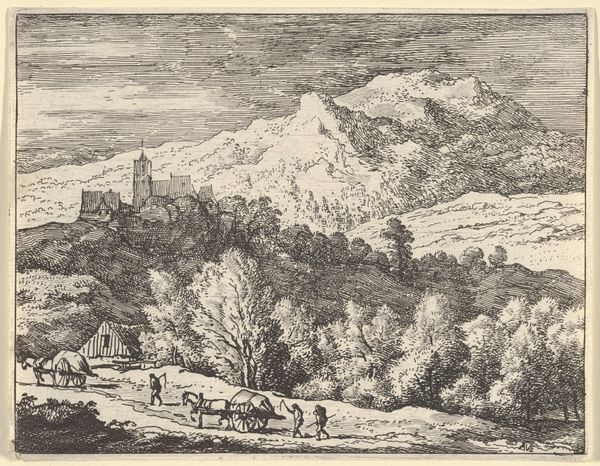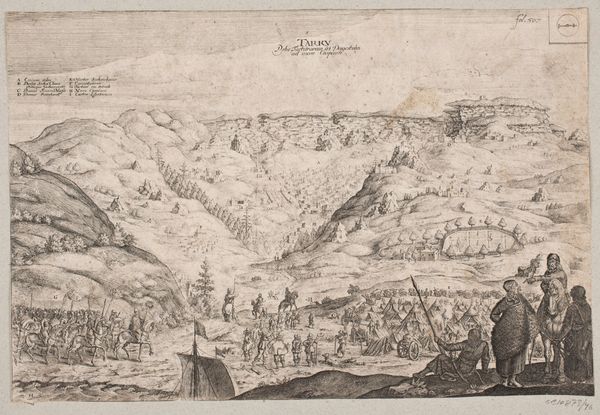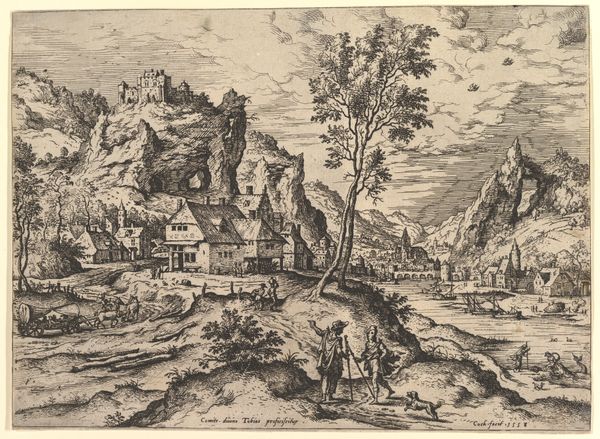
drawing, print, etching, ink, woodcut, engraving
#
drawing
#
medieval
# print
#
etching
#
landscape
#
ink
#
mountain
#
woodcut
#
engraving
Dimensions: plate: 6 1/8 x 8 1/8 in. (15.5 x 20.7 cm) sheet: 7 3/8 x 10 1/16 in. (18.7 x 25.5 cm)
Copyright: Public Domain
Editor: So, here we have "Mountain Landscape with Falconers" by Lucas Gassel, made sometime between 1555 and 1575. It's an etching, engraving, woodcut...basically, a print! It has this wonderfully detailed landscape with tiny figures. I get a strong sense of a bustling, self-contained world, a miniature kingdom if you will. What captures your eye when you look at this, what details stand out to you? Curator: Well, right away, I'm struck by the composition itself. It feels like Gassel is inviting us on a journey through this tiny land. But look closer – do you see the falconers? Are they simply hunting, or perhaps are they symbolic of something more, say, nobility and power staking their claim upon the very landscape itself? Also, the way the etching renders every single detail makes the mind reel. It's all so thought-out. What does this almost overwhelming level of detail evoke in *you*? Editor: I think it adds to the sense of a complete, enclosed world. Every little detail, from the birds in the sky to the livestock, makes the landscape feel populated and…real. The composition doesn't exactly respect the rules of depth or perspective either! I think that the landscape feels more imagined than seen, it evokes a sort of emotional mapping more than something topographic. Curator: Absolutely. It's almost dreamlike. In a way, aren’t all landscapes maps of our inner selves, a reflection of what we carry within? Think of it: we look out and see what our souls project. And Gassel, he’s letting us peek into *his* world, bit by bit. Isn't that beautiful? Editor: That’s a wonderful way to think about it. Thanks! I never would have made that connection without your input.
Comments
No comments
Be the first to comment and join the conversation on the ultimate creative platform.
